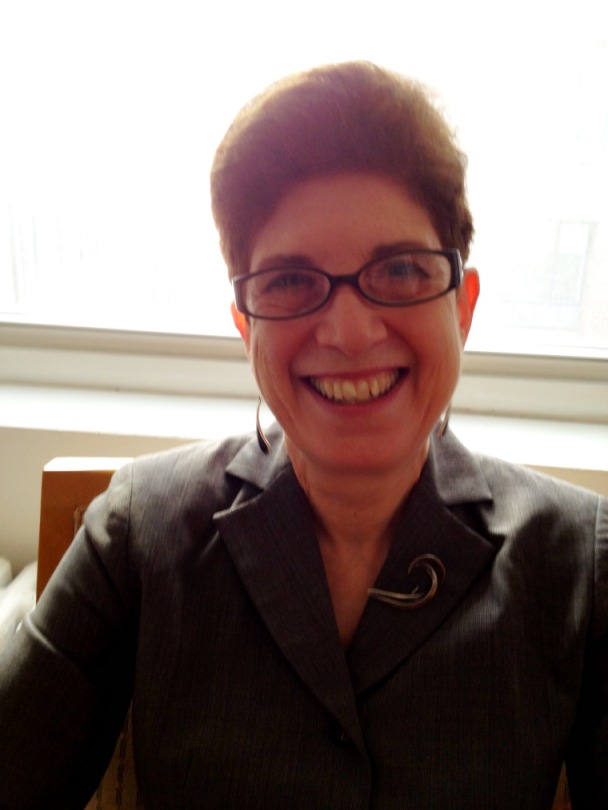Polly Kahn Describes Community Outreach
Polly Kahn recently stepped down from her position as Vice President and Leadership Development at the League of American Orchestras after 14 years of devoted service. (She hasn’t left the orchestra field, however; I’m certain we will all benefit from her vision and wisdom in the future.) Polly was immersed in training individuals to make a difference in individual orchestras, and helping orchestras to make a difference in their communities.
As a farewell to the League, Polly wrote a beautiful article for Symphony Magazine, aptly titled, “Making a Difference,” in which she gives us an overview of the myriad ways in which orchestras are re-imagining and re-defining themselves. She mentions quite a few innovative programs. Among them: the Chicago Symphony’s “Citizen Musician” initiative bringing CSO musicians into juvenile jails; the Phoenix Symphony’s “B-Sharp Music Wellness” program that works with the homeless population; and the Central Ohio Symphony’s work with juveniles in the mental health court system.
Polly classifies these new orchestra initiatives into three areas, each of which offers “fresh approaches to community involvement … as orchestras grow in their civic and social roles.” I’ll mention a few of these new initiatives in each area, but please do take a look at Polly’s article, which is full of photos and much more detail about these programs. And Polly writes so very eloquently!
1) Engaging Community in New Ways
Orchestras are experimenting with novel program formats, different venues, and social media.
- The Tuscon Symphony has an annual residency on Native-American reservations.
- The Cincinnati Symphony celebrated Beethoven’s Ninth city-wide by basing the celebration on the NEA’s “Big Read.”
- The Dallas Symphony premiered The World is Very Different Now by 19-year old Conrad Tao to mark the 50th anniversary of the Kennedy assassination.
- The Toronto Symphony and composer Tod Machover created a soundscape, “Concert for Composer and City.”
- Many orchestras now offer programming in bars and public squares. Others offer late-night events, short concerts based on contemporary events, and experiment with technology and social media. Many of these initiatives are attracting younger audiences.
2) Education, Inside and Outside our Schools
Arts education initiatives are experiencing a complete makeover, as orchestras redefine how to offer their services to their schools and communities.
- In-school partnerships: the traditional “fly-by” model of bringing a symphony ensemble into schools, where a concert is repeated for every grade class in a school district, is being replaced with a focus on fewer schools and students, to increase the impact of the engagement. More and more orchestras are moving towards multi-year partnerships with the same children.
- Teaching artists: the use of skilled teaching artists to partner with classroom and music teachers is becoming much more common.
- After-school programs: the El Sistema movement is sweeping North America, as more and more orchestras, conservatories, and music schools embrace the Venezuelan model for combating poverty with an all-inclusive music program. Polly cites the OrchKids program in Baltimore and YOLA in Los Angeles as two of the pioneers in this field.
3) Expanded Programmatic Landscape
Orchestras are creating programs that bring the orchestral musicians into new sectors of the community: health, juvenile justice, and the environment.
- Orchestras are working with music therapists to partner with hospitals, rehabilitation centers, nursing and group homes, and special-needs programs.
- Orchestras in Pittsburgh, Knoxville TN and Madison WI have pioneered programs in the health sector.
- Creative aging: orchestras are providing opportunities to engage aging Baby Boomers and others. She cites Baltimore’s “Rusty Musicians” program and San Francisco’s “Community of Music Makers.”
- Juvenile justice: orchestras are experimenting with involvement among incarcerated young adults. Central Ohio Symphony uses drumming circles, Carnegie Hall delivers musical recourse to prisoners on Rickers Island and in Sing Sing prison. The Chicago Symphony’s program brings musicians into the juvenile correctional institutions.
- Community healing: orchestras are responding to events in the community with powerful, relevant programming. Symphonic concerts organized after the September 11 events, Hurricane Katrina, the Nashville flood, a hurricane in Pensacola, and a tornado in Peoria, to name just a few, have offered communities a place to gather and heal.
- Community dialogue and social activism: Polly cites orchestral and operatic works that address significant social issues. John Adams’ On the Transmigration of Souls and The Death of Klinghoffer; Hannibal Lokumbe’s And Their Voices Cry Freedom, a tribute to Emmett Till, performed by the New Jersey Symphony; Michael Daugherty’s “Rosa Parks Boulevard” from his Motor City Triptych; Randall Wolff’s Blues for Black Hoodies written about the death of Trayvor Martin, and Conrad Tao’s afore-mentioned The World is Very Different Now. Each of these works has a major impact on the community; she compares them to Picasso’s Guernica from 1937, his metaphor for the atrocity of war.
The local partnerships that often accompany premieres, and the interest and dialogue that they trigger, are powerful contributors to raising awareness and understanding of issues – local, national, and global – in society.
In summary, Polly states that “the work described here mattes for orchestras because it is the right thing to do.” I urge you to take a look at this beautifully-written article to gain an appreciation for all that our industry is doing, one community at a time, to “contribute to the collective vitality and health” of our citizens.


No comments yet.
Add your comment